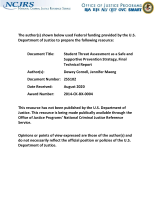Timing of Delinquent Behavior and It's Implications for After-School Programs
Journal
Date Published
November 2001
Agencies
NIJ-Sponsored
Publication Type
Report (Study/Research)


